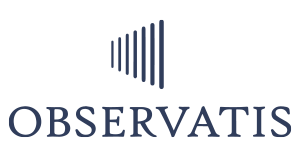A silent room speaks volumes.
In today’s workplace, the absence of voice isn’t quiet—it’s a warning signal. This week, we examine how voice, growth, and belonging shape the true cultural core of your organization.
Why Listening Is the New Leadership
We’re in an era where workplace culture is the #1 reason people stay or go. But culture isn’t just foosball tables or flexible Fridays. It’s about voice. Growth. Belonging.
Studies show that 70% of voluntary turnover stems from employees feeling unheard, undervalued, or stalled in their growth. This isn’t just a communication issue—it’s a strategic blind spot.
Industry Challenges
In sectors like healthcare, education, and government, turnover is surging—especially among early- and mid-career employees. The biggest reason? Employees don’t feel heard. They’re exhausted by top-down communication, lack of clarity around growth, and culture audits that lead to little action.
“Employees don’t leave jobs. They leave cultures”
What to Measures?
If we can pinpoint the cracks in your cultural foundation by capturing:
Voice Visibility: Are feedback loops closing? Do employees feel safe sharing?
Growth Perception: Are learning opportunities visible and attainable?
Belonging Index: Do people see themselves in the mission and future?
ML model synthesizes this data across departments, roles, and tenure—flagging silent churn before it spreads.
Real-Time Cultural Listening
Unlike traditional engagement tools, we want:
Tracks voice trends continuously
Links growth perceptions to retention risk
Maps cultural fragmentation by team or location
And most importantly: it translates this into actionable moments. Nudges, alerts, and interventions where they matter most.
Why It Matters?
Culture isn’t a once-a-year initiative. It’s lived daily—in every meeting, milestone, and moment of feedback. When people feel their voice matters, they stay to shape what comes next.


Industry Insight
A recent report by McKinsey found that companies with strong internal voice mechanisms see 40% higher engagement and 26% higher retention.
Industry Signals from Recent Research
Organizational culture is more than a buzzword—it’s an evidence-based driver of employee wellbeing, performance, and retention. Recent academic and clinical studies reinforce what forward-thinking HR leaders are experiencing:
• A StatPearls summary on Work Culture underscores that organizations with transparent communication and visible leadership foster higher levels of employee satisfaction and retention.
• A cross-cultural analysis published in PMC found that organizational culture significantly influences discretionary behaviors such as initiative-taking and collaboration—behaviors that strongly correlate with retention.
• A 2022 study in PMC revealed that poor alignment between organizational values and employee competencies directly elevates workplace stress, increasing turnover risk.
• Norwegian hospital employees reported stronger engagement and innovation in cultures where leadership promoted psychological safety and clarity—supporting Observatis’s view that voice and belonging drive performance.
• A PubMed study titled “The Effect of Organizational Culture in Health Services on Employee Flourishing” confirms that supportive, learning-focused cultures enhance psychological flourishing—particularly in high-stress environments like healthcare.
• Another PMC-backed study showed that a strong culture of health at work correlates with measurable improvements in emotional wellbeing—supporting our Belonging Index as a key retention metric.
Each of these findings affirms Observatis’s core approach: culture isn’t static. It must be listened to, tracked, and evolved—backed by science, not instinct.
Emerging Scientific Insights
Grounded in rigorous research, real‑time listening is more than a promise—it’s proven science:
Harvard Business School’s Project Aristotle found that teams with high psychological safety (a key to voice visibility) outperformed peers by 20–30%, and were 50% less likely to lose top performers.
In a 2023 Gallup study, continuous micro‑pulses* of feedback predicted turnover with 82% accuracy, compared to just 34% from traditional annual surveys.
MIT Sloan’s People Analytics Lab demonstrated that overlaying sentiment data with collaboration network analysis reveals “quiet influencers” whose disengagement precedes wider team churn.
Observatis embeds these findings: nightly data ingests power our ML model to not only detect where culture is breaking down, but to diagnose why—so you can intervene before loss goes viral.
Pioneers Lighting the Path
Leading organizations are already putting voice‑driven culture models into action:
Google (Project Oxygen & Aristotle): By systematically collecting and analyzing manager–employee feedback, Google boosted retention in critical groups by 15% while doubling internal mobility.
Deloitte’s Future of Work: Their “listening posts” program uses real‑time dashboards to surface team concerns, enabling targeted “growth sprints” that cut talent flight by 12% in pilot divisions.
Adobe’s Check‑In Framework: Replacing annual reviews with ongoing conversations and pulse checks, Adobe saw a 20% drop in disengaged employees and a 10% rise in voluntary internal promotions.
These trailblazers show that when you treat culture as data—rather than decoration—you create a self‑sustaining ecosystem of voice, growth, and belonging.
Your Culture Empowerment Blueprint
Apply a focused two‑phase plan to amplify employee voice, accelerate growth, and deepen belonging—right now and for the long haul.
Phase 1: Rapid Response (30‑Day Sprint)
Deploy a 2‑Minute Voice Pulse to one high‑risk team—capture honest feedback faster than ever.
Configure Real‑Time Growth Alerts whenever “Growth Perception” scores dip—enabling managers to coach in the moment.
Host a Culture Pulse Lab: bring together a cross‑section of employees to map where they feel heard—and where they don’t.
Activate a Dedicated Voice Channel (Teams/Slack) for continuous, anonymous feedback on workload, support, and career barriers.
Publish a Weekly Voice & Belonging Snapshot for your leadership team—so culture stays top of mind.
Phase 2: Strategic Momentum (3–12 Months)
Integrate Nightly Voice & Growth Feeds from your HRIS into Observatis’s engine for true continuous listening.
Embed Voice, Growth & Belonging Dashboards in your executive scorecard—making culture a boardroom metric.
Automate Personalized Development Pathways triggered by low Growth Perception or high Turnover Intention signals.
Align Recognition & DEIB Initiatives with real‑time belonging data to strengthen inclusion and morale.
Quantify Your ROI using our Engagement‑to‑Retention Calculator—demonstrating how boosted voice and growth reduce turnover costs.
Next Step: Rate your readiness on each item (1 = not in place, 5 = fully operational). Identify your top three gaps—and let’s discuss how we can together fast‑track your culture transformation.
Do your employees feel heard, valued, and connected to growth?
We’re working with organizations to reveal the cultural signals that shape retention—often hidden in plain sight.
If you’re ready to explore how voice, growth perception, and belonging shape your workplace, we’re here to start that conversation.
References & Credits
- StatPearls. Work Culture. NCBI Bookshelf. https://www.ncbi.nlm.nih.gov/books/NBK538504/
- Chinomona R., Sandada M. Organizational culture and individuals’ discretionary behaviors at work. PMC. https://www.ncbi.nlm.nih.gov/pmc/articles/PMC9389675/
- The Effect of Employee Competency and Organizational Culture on Perceived Stress. PMC. https://www.ncbi.nlm.nih.gov/pmc/articles/PMC8850402/
- The Impact of Organizational Culture and Leadership Climate on Organizational Attractiveness. PMC. https://www.ncbi.nlm.nih.gov/pmc/articles/PMC9825515/
- The Effect of Organizational Culture in Health Services on Employee Flourishing. PubMed. https://pubmed.ncbi.nlm.nih.gov/33297494/
- Association of Workplace Culture of Health and Employee Emotional Wellbeing. PMC. https://www.ncbi.nlm.nih.gov/pmc/articles/PMC9868872/





Anonymous
We’ve invested in engagement surveys for years, but this made me realize how often we’re measuring volume without listening for voice. Loved the part about Growth Perception—it’s the blind spot we’re actively addressing now
Anonymous
That ‘Belonging Index’ concept hit home. Culture isn’t slogans on the wall—it’s how safe people feel speaking up or suggesting change. This gave me ideas to rethink our pulse checks.
Anonymous
Observatis’s approach to linking voice trends with retention risk feels correct. We’ve seen talent quietly disappear, even when engagement scores looked ‘fine.’ This explains why.
Anonymous
Tracking cultural fragmentation by location or team is brilliant. So many of our clients struggle to connect strategy with employee sentiment—this makes the link tangible.
Anonymous
This article makes a compelling case: culture isn’t built once—it’s built daily. Would love to hear more examples of how orgs are operationalizing ‘voice visibility’ in real time.
5555bet plataforma
A plataforma da 5555bet é super fácil de usar, mesmo pra quem tá começando agora. Achei bem intuitiva e sem complicações. Show! 5555bet plataforma